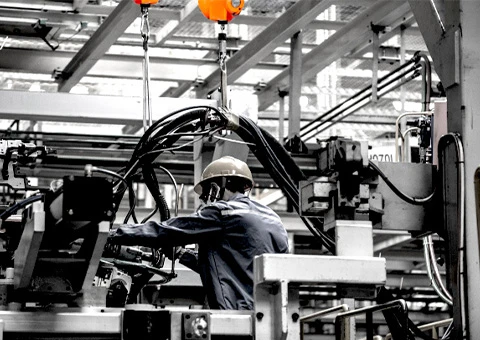workshop gantry
The Workshop Gantry A Comprehensive Overview
In the ever-evolving landscape of manufacturing and engineering, the workshop gantry plays a pivotal role in enhancing efficiency and productivity. These structures are essential for handling heavy materials, providing support for various types of machinery, and facilitating the smooth operation of workshops. In this article, we will delve into the definition, types, advantages, and applications of workshop gantries, highlighting their significance in today's industrial environments.
What is a Workshop Gantry?
A workshop gantry refers to a large framework or structure, typically made of steel or aluminum, that is supported by vertical posts and features a crossbeam. This design allows the gantry to support heavy loads and move them horizontally across a designated workspace. Gantries are widely used in workshops, warehouses, manufacturing plants, and construction sites, where the movement of bulky items is routine.
Types of Workshop Gantries
There are several types of workshop gantries, each designed for specific applications
1. Fixed Gantries These are permanently installed structures that provide consistent support for equipment and materials. They are often found in manufacturing environments and are ideal for repetitive tasks.
2. Mobile Gantries Unlike fixed gantries, mobile gantries can be moved around the workshop. They are equipped with wheels or casters, making them versatile and suitable for various tasks, especially in smaller spaces.
3. Electric Gantries These gantries incorporate electric or hydraulic lifts to facilitate the movement of heavy items. They are particularly advantageous in environments where heavy lifting is frequent, reducing the physical strain on workers.
Advantages of Workshop Gantries
Workshop gantries offer numerous benefits that enhance workshop operations
1. Increased Efficiency By facilitating the easy movement of heavy materials, gantries streamline workflow, enabling quicker loading and unloading processes.
workshop gantry

2. Improved Safety Gantries reduce the risk associated with manual handling of heavy items, minimizing the chances of workplace injuries.
3. Space Optimization Workshop gantries can be designed to fit within specific workspace dimensions, helping to maximize available space in busy environments.
4. Cost-Effective Solutions While the initial investment may seem high, the long-term benefits, including increased productivity and reduced injury-related costs, make gantries a cost-effective solution for businesses.
Applications of Workshop Gantries
The applications of workshop gantries are vast and varied, catering to numerous industries
- Manufacturing Gantries are crucial in factories for moving components along assembly lines and transporting finished goods to storage areas.
- Construction In construction sites, gantries facilitate the movement of heavy materials like steel beams, concrete blocks, and equipment, improving project timelines.
- Warehousing They are employed in warehouses to lift pallets and boxes, simplifying inventory management and order fulfillment processes.
- Automotive In vehicle manufacturing and repair, gantries are essential for lifting engines and other heavy parts for assembly or maintenance.
Conclusion
The workshop gantry is an integral component of modern industrial operations. Its design and functionality cater to a wide range of applications, making it an indispensable tool in enhancing efficiency, improving safety, and optimizing workspace. As industries continue to grow and evolve, the importance of such structures will only increase, paving the way for more innovative designs and technologies that will further streamline workshop processes. Investing in a workshop gantry is not just a choice; it is a strategic decision that can yield significant returns in enhanced productivity and operational effectiveness. Whether in manufacturing, construction, or warehousing, the workshop gantry stands as a testament to the advancement of industrial capabilities.
-
Unlock Seamless Relocation with Our Heavy Equipment Moving ExpertiseNewsJun.06,2025
-
Unleash Unrivaled Flexibility with Our Adjustable Gantry CraneNewsJun.06,2025
-
Unleash Heavy-Duty Efficiency with Our Industrial Gantry Crane SolutionsNewsJun.06,2025
-
Revolutionize Steel Handling with Our Magnetic Lifter RangeNewsJun.06,2025
-
Master Equipment Mobility with Premium Machinery Mover SolutionsNewsJun.06,2025
-
Elevate Your Material Handling with Magnetic Lifter TechnologyNewsJun.06,2025
-
YS Permanent Lifting Magnets: The Smarter Way to Handle SteelNewsMay.22,2025
